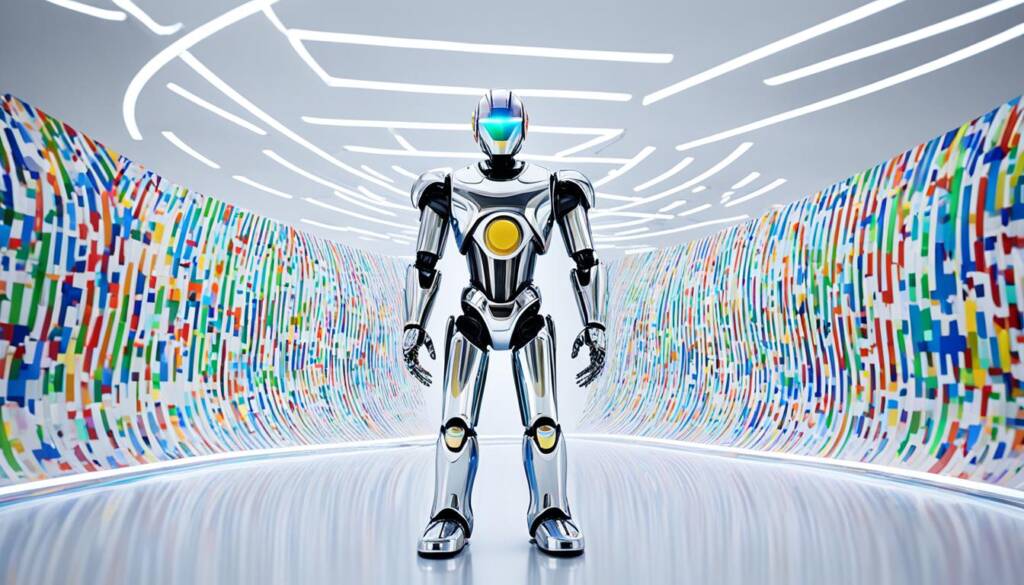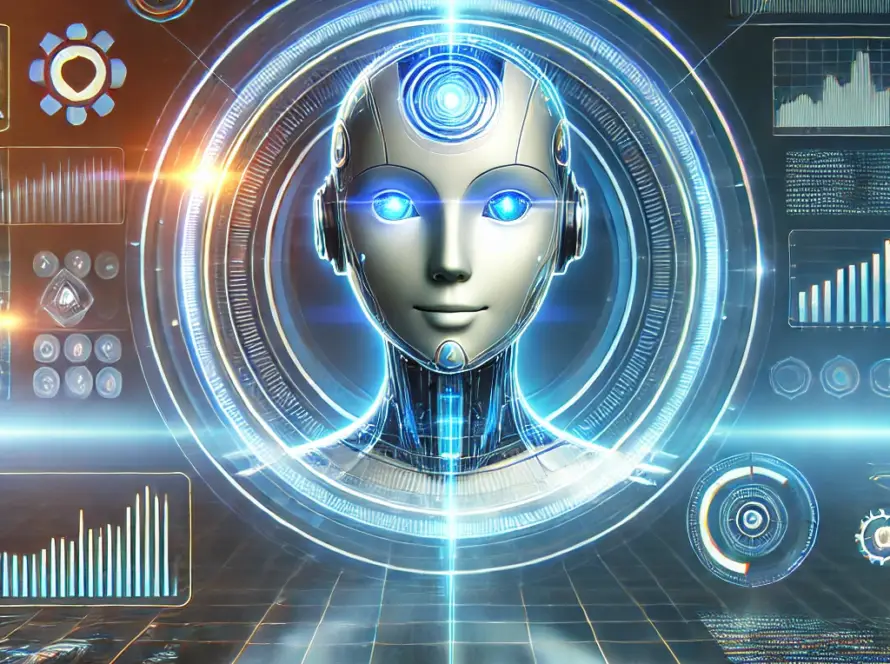AI technology is advancing quickly, changing how we use the internet. Google’s smart systems and Google Bot are a big part of this change. One key development is the Web AI Engine Webaie. It mixes website features with advanced AI. This technology, using GPT models and sophisticated AI algorithms, responds quickly and thoughtfully to what we need. It makes sites not just places for data, but partners that help us learn and do more..
Webaie is far more than a simple AI Engine. It’s built to really understand what users want. As we surf the internet, Webaie raises the bar for our experience. It offers smart, smooth responses. This new approach changes how we see and use websites, making online life fresher and smarter.

Key Takeaways
- The *Web AI Engine Webaie* is a fresh approach, blending site features with cutting-edge AI.
- Google looks for original, top-notch content that’s full of expertise and trust in its search results.1
- The rise of AI tech and efficient bot use have reshaped many sectors.2
- Webaie sets a high standard for user pleasure with quick, smart, and fitting answers, turning sites into spaces that interact with us.
- Google’s intelligent tools, like the Web AI Engine, play a big role in making the web more lively and fun.
Understanding Google Bot: Crawling and Rendering
Google Bot is key to making sure webpages look right for people. It checks HTML, images, CSS, and JavaScript closely to show the page well. This is very crucial for sites with detailed designs during Crawling and Rendering.
How Google Bot Renders Webpages
The Googlebot finds and loads pages using smart rules3. It decides which pages to visit, how often, and picks the right number from each site3. While doing this, it makes sure not to overload the site. It looks at the site’s HTML, CSS, and JavaScript4.
Role of Quality Detection in AI Content Handling
To handle tons of AI-made content, Googlebot checks for quality right away4. It skips over poor pages to save resources and work well. In the indexing part, it studies the page’s text, important tags, pictures, and data to keep only the best content3. Detecting quality is crucial for managing loads of AI content well.
Challenges and Adaptations in Crawling AI Content
Still, there are hurdles with AI content in Crawling and Rendering. Problems like dynamic JavaScript, crawl errors, and managing lots of sites are tricky4. Plus, Googlebot must handle complex site designs and keep the index up to date with changes4. It solves these challenges to keep Crawling and Rendering strong.
Handling different Googlebot types, like for Smartphones or just images, makes it harder5. But, these changes help Googlebot deal with a wide range of content on any device. They are vital for accurate page views and indexing.
Bot and AI Algorithms: How They Shape Google Search
In recent years, AI has impacted Google Search greatly, making the user experience better. Google works hard to keep the quality of its content high. It uses tools like *SpamBrain* and follows E-E-A-T principles. This means you get good content, no matter who made it, humans or AI.
Google’s Approach to AI-Generated Content
Google pays a lot of attention to content created by AI based on expertise and trust. It wants to give you useful information that’s also high quality. This effort makes sure what you find online is helpful and right for you. Google Bard, for example, helps by giving accurate and personal replies to your searches6.
Automation and Quality Content Creation
Google has strict rules about stopping spam. It wants automation to help, not hurt, the quality of its search results. Google Bard, for example, can do more than searches. It can also help with reminders and bookings very accurately. This shows how automatic content can be good and trusted online6.
Examples of Effective AI Content
Many AI tools show how well they can create helpful content. Virtual helpers like Google Assistant and Siri are good examples. They listen to voice commands and understand what you want, adding value to your searches2. AI chatbots, like ChatGPT, also do a great job, with ChatGPT holding a 60% market share. They talk to you just like a person, making things personal and relevant. These examples highlight the positive impact AI content can have. It makes your online searches better and maintains the high standards of *Google Search*.
Conclusion
We’ve looked closely at Google’s bot and AI algorithms, and it’s clear they have a huge impact. With the arrival of the Web AI Engine, especially Webaie, websites are becoming more dynamic. They’re moving from static sites to interactive places, thanks to advanced AI technology. This change is all about making the online experience better and faster for everyone.
Google is continuously improving its algorithms, so using AI ethically is more important than ever. The journey began with ELIZA in the 1960s and has led to today’s smart assistants like Siri and Alexa. To win people’s trust, it’s vital to design AI with ethics in mind2.
The future of AI looks bright as it combines human creativity with high-tech tools. With advanced models like BERT and GPT-3, chatbots are getting smarter. It’s a challenging path that calls for ongoing creativity and planning. But, by being responsible with our algorithms, we can create a web where both people and AI thrive. The goal is to offer content that’s accurate, trustworthy, and meets everyone’s needs.
Source Links
- https://developers.google.com/search/blog/2023/02/google-search-and-ai-content
- https://www.red-gate.com/simple-talk/homepage/bots-usage-in-artificial-intelligence/
- https://developers.google.com/search/docs/fundamentals/how-search-works
- https://www.quattr.com/improve-discoverability/googlebot-crawling
- https://developers.google.com/search/docs/crawling-indexing/overview-google-crawlers
- https://www.linkedin.com/pulse/google-bard-how-search-engines-new-ai-chatbot-shape-bhardwaj


